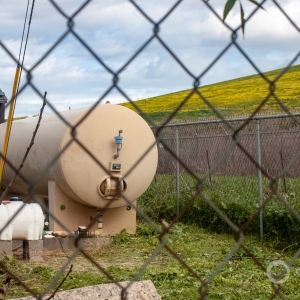The Stream, April 16: Flooding Damages in Iran Top $2.5 Billion
The Global Rundown
Recent flooding in Iran caused $2.5 billion in damages, according to state media. A stream in Belgium is called the ‘most polluted in Europe’ due to a startling concentration of pesticides. Several Alaskan rivers thaw in record time following warm winter and spring temperatures. Cases of West Nile Virus will likely fall in California as the state moves out of drought. A month after Cyclone Idai, aid is just reaching many rural areas in Mozambique.
“After a disaster of this scale, the world must not look away.” –Machiel Pouw, a response team leader with Save the Children, in reference to the destruction caused by Cyclone Idai in Mozambique. The cyclone hit near port city Beira on March 14, and Oxfam estimates that 4,000 people living in rural areas are still cut off from aid. Idai killed more than 1,000 people and caused an estimated $2 billion in damages. Reuters
Latest WaterNews from Circle of Blue
In Bid for Cleaner Water, California Seeks Arranged Utility Marriages — Uniting small, failing utilities with larger neighbors can fix water problems.
Despite Billions in Losses and Clear Financial Dangers, Companies Slow to Respond to Water Risks — More businesses track water use, but fewer take the next step of setting targets.
By The Numbers
70 Hazardous pesticides found in Wulfdambeek stream, a waterway in Ledegem, Belgium. Decades ago, the stream was used for drinking water, but now the concentration of pollutants is so high that researchers say the water would likely work as a pesticide. It has been dubbed Europe’s most polluted stream. The Guardian
$2.5 billion Estimated damages caused to roads, homes, businesses, and agriculture after weeks of flooding in Iran. The flooding has left 76 people dead and displaced more than 200,000. Reuters
Science, Studies, and Reports
Scientists say that the end of California’s drought may also lead to a drop in transmission of the West Nile virus, a mosquito-borne illness that appears to spread more quickly in dry conditions. In 2015, the height of California’s recent drought, severe cases of the virus peaked. Since then, cases have declined as drought has eased. Los Angeles Times
On the Radar
Several rivers in Alaska experienced record-early thaws this spring following a warmer-than-average winter and spring. The Tanana River in central Alaska broke up at the earliest date in 102 years of record-keeping, and other waterways have seen similar early thaws. Researchers say the phenomenon reflects long-term climate change in the state. Reuters

Kayla Ritter is a recent graduate of Michigan State University, where she studied International Relations and Teaching English to Speakers of Other Languages. She is currently based in Manton, Michigan. Kayla enjoys running, writing, and traveling. Contact Kayla Ritter






Leave a Reply
Want to join the discussion?Feel free to contribute!